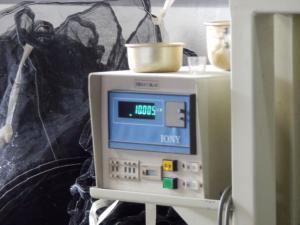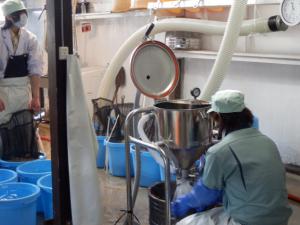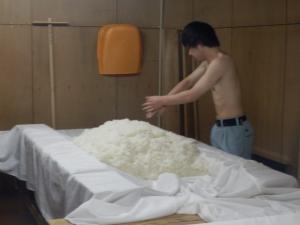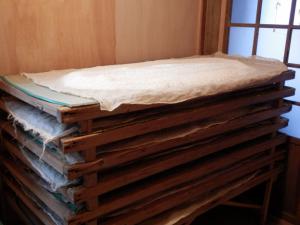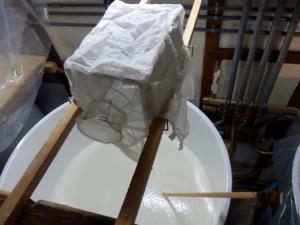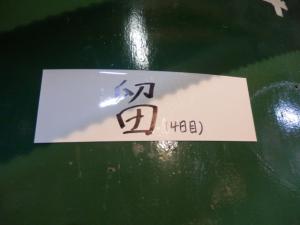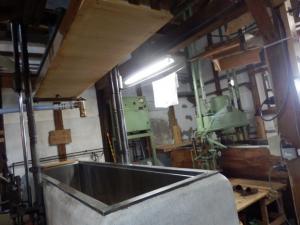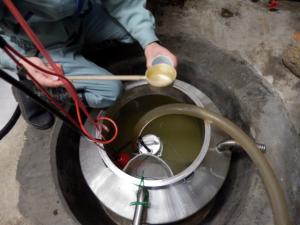AIZU02(Aizu-Bange Town):A Heartwarming Sake Brewery - Akebono Brewery No. 2(Hama, Naka, Aizu!)
The sake brewing process
Each step of the sake making process is very deep. The process begins with polishing a special kind of rice that is suited for making sake. For regular sake, 30% of the outer shell of the rice is shaved off, for mid-quality ‘ginjo-shu’ 40-50% is shaved off. To make the top quality sake known as ‘dai-ginjo’ it’s necessary to shave off over 50% of the rice shell. Akebono hires a company in Koriyama City to polish the rice for them. The next step is washing the rice. While this may seem simple enough, special care is needed when washing the delicate grains of rice. At the Akebono Brewery, they use special equipment to evenly distribute (There is only a 0.001 kilogram margin of error) the rice into buckets for washing. The reason for washing the rice is so that in the later steaming process, the outside of the rice becomes hard, while the inside is soft so that the rice malt can be absorbed easily.
The rice is then steamed using a large steam cooker called a ‘koshiki’. After being steamed the rice is taken to an area where it is cooled, and then once it reaches a determined temperature, it is taken to a room where the rice malt is made. The key to making delicious sake is the rice malt, and the quality of it can greatly affect the final sake produced. The room used to make rice malt is maintained at a high temperature of around 30 degrees. This is in order to create an environment where it is easy for rice malt mold to grow. Steamed rice is place on top of a stand, and after the moisture in the rice has evaporated, a special ingredient is added to start the rice malt growing. This process is repeated every 2 hours, and the workers work 24 shifts, with no sleep. This lead to the coinage of the phrase ‘The workers sleep with the rice malt’.
The rice malt produced through this process is set to dry for a spell, and is then put in a tank along with yeast, steamed rice, and water, in order to make the ‘shubo’ or yeast mash. After the yeast mash is made, rice malt, steamed rice, and water is added, in order to make ‘moromi’ or fermenting mash. At Akebono, the rice malt and steamed rice are added over three days instead of all at once. This is a special method used when making Japanese sake, and helps the fermenting process proceed smoothly and prevent any impurities from entering the sake. 25 or 30 days after last ingredients are added, the matured moromi is separated into sake, and sake lees. To do this, the moromi is put in linen bags, and then is pressed using a large pressing machine called a ‘fune’, and the sake produced is pumped through pipes into a special tank for storage.
After this long process the sake can finally be called refined sake. After being filtered, and then heated to kill any bacteria, and lastly bottled, it becomes the final product ready to be put on sale. |
